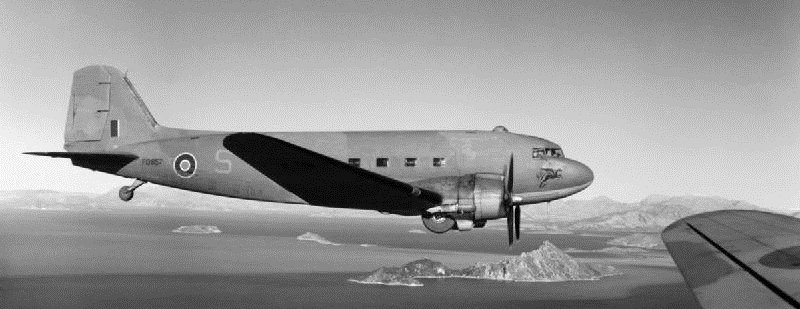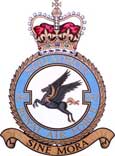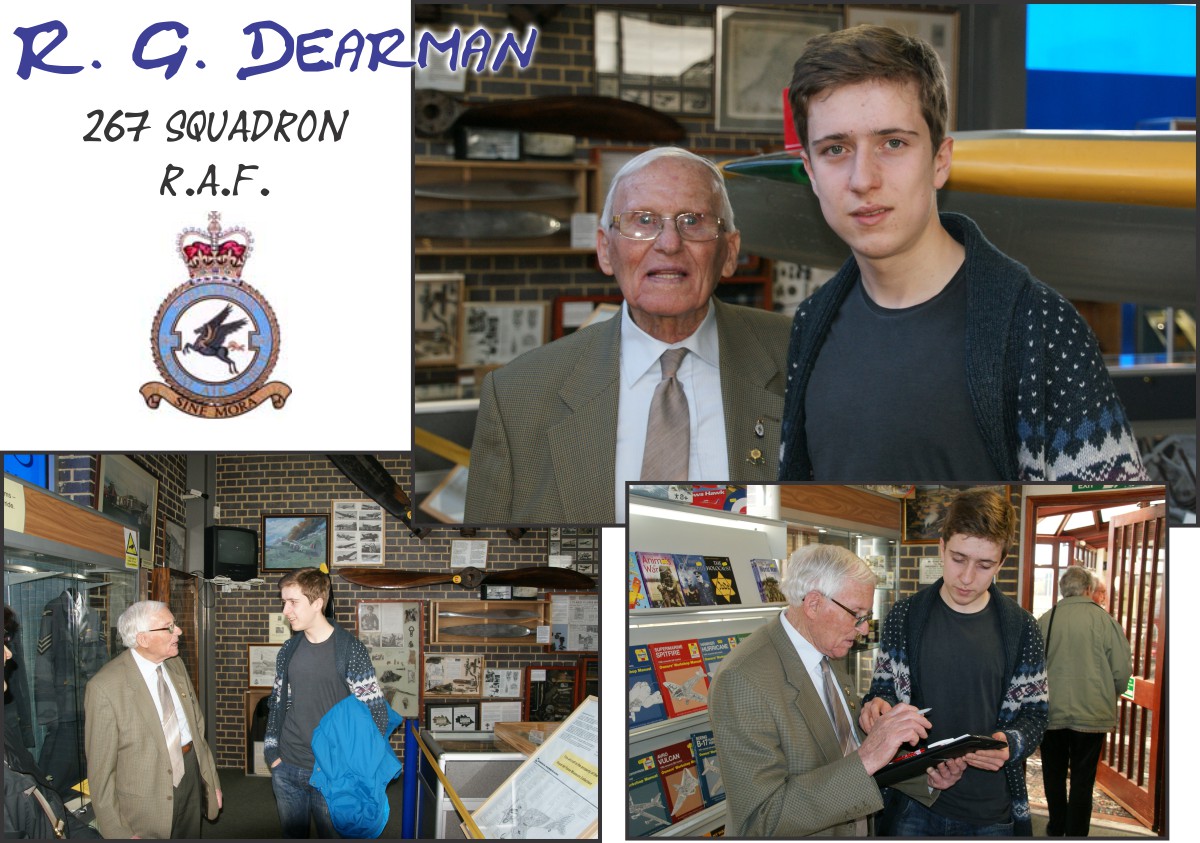R. G. Dearman, No. 267 Squadron R.A.F.
During my England trip on April 1, 2013, and my visit to the RAF Manston Spitfire and Hurricane Memorial Museum, I met R. G. Dearman who served during World War Two in the 267 Squadron of the Royal Air Force.

A 267 Squadron Douglas Dakota C.III in flight, 1944
|
 |
No.267 Squadron was a transport squadron that served in the Mediterranean from its formation in 1940 until early 1945, and then moved to Burma to help support the final Allied offensive in that country.
The squadron was reformed on 19 August 1940 by the re-designation of the Communications Unit, Heliopolis. At first it was equipped with a wide range of small and medium sized aircraft, and was used for mail, passenger and cargo flights from Egypt to distant bases. The squadron was also involved in the evacuation from Greece, using its Lodestars and Bombays for night flights. |
By the summer of 1942 the squadron's aircraft had been replaced with twin-engined transports, including a number of Lockheed Hudsons and the Dakota. The last Hudsons went in the summer of 1943 and after that the squadron only operated the Dakota.
The extra range of the twin engined aircraft allowed the squadron to operate around the Mediterranean. The squadron now provided general transport services, as well as casualty evacuation flights and some limited supply drop missions to support partisans in Italy and the Balkans. One notable casualty evacuation mission saw the squadron fly 219 wounded men from the Yugoslav Partisan II Corps after heavy fighting in August 1944. This was part of a larger effort in which 1078 casualties were evacuated from a hastily constructed airfield at Brezna. The squadron also made occasional 'pick-ups', including one on 25-26 July 1944 in which four passengers were collected from a field in occupied Poland. Two more pick-up missions were performed, including one in which intelligence relating to the V-2 rocket was retrieved.
In February 1945 the squadron moved from its bases in Italy east to India, where the final campaigns of the long war in Burma were about to begin. The Allied successes in Burma owed much to the system of air supply that was adopted, and No.267 was one of the squadrons used to fly supplies to the advancing 14th Army. After the end of the fighting the squadron returned to a more standard transport role, before being disbanded in the summer of 1946.
Thanks Mr. Dearman, It was nice to meet and talk with you.

